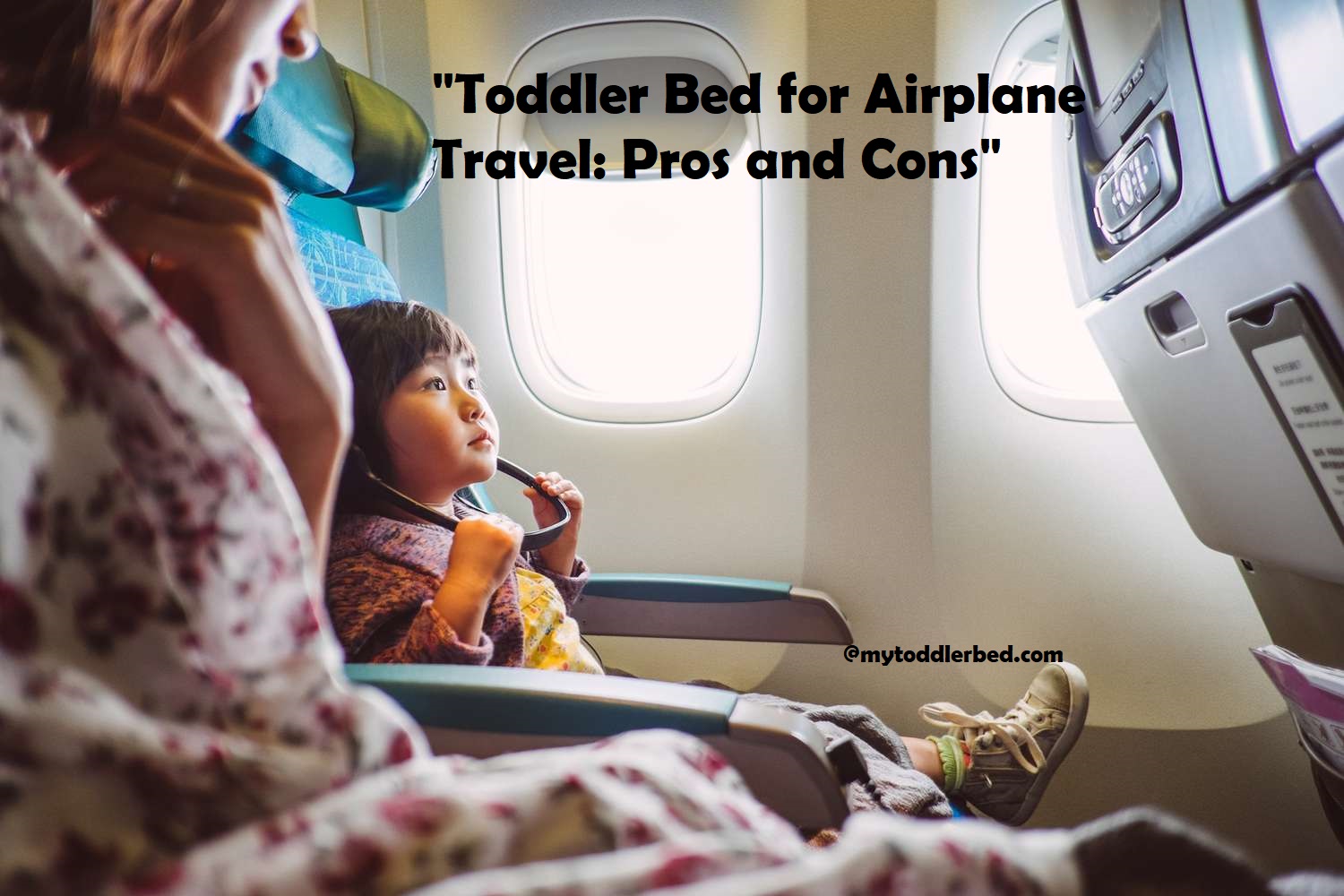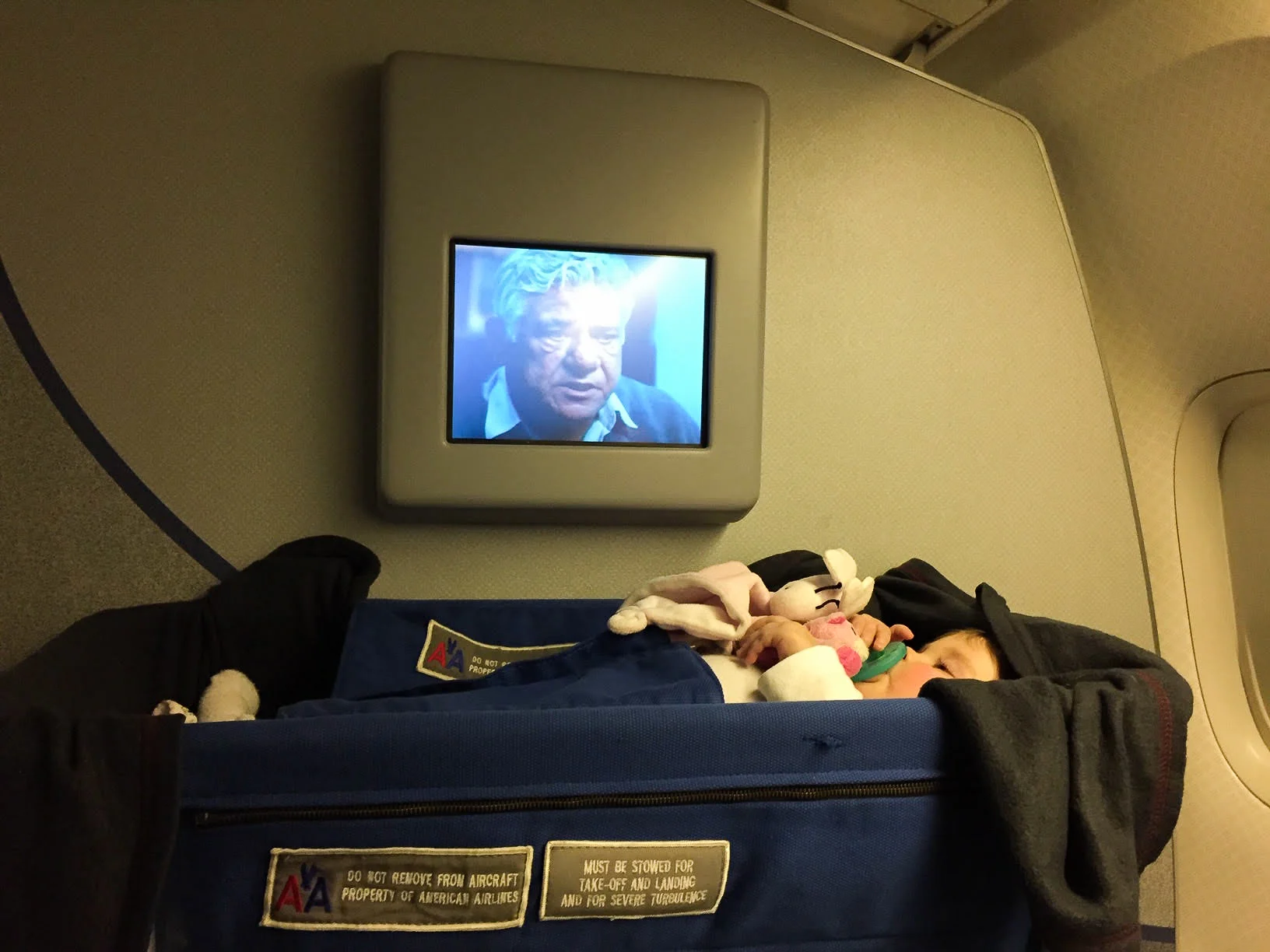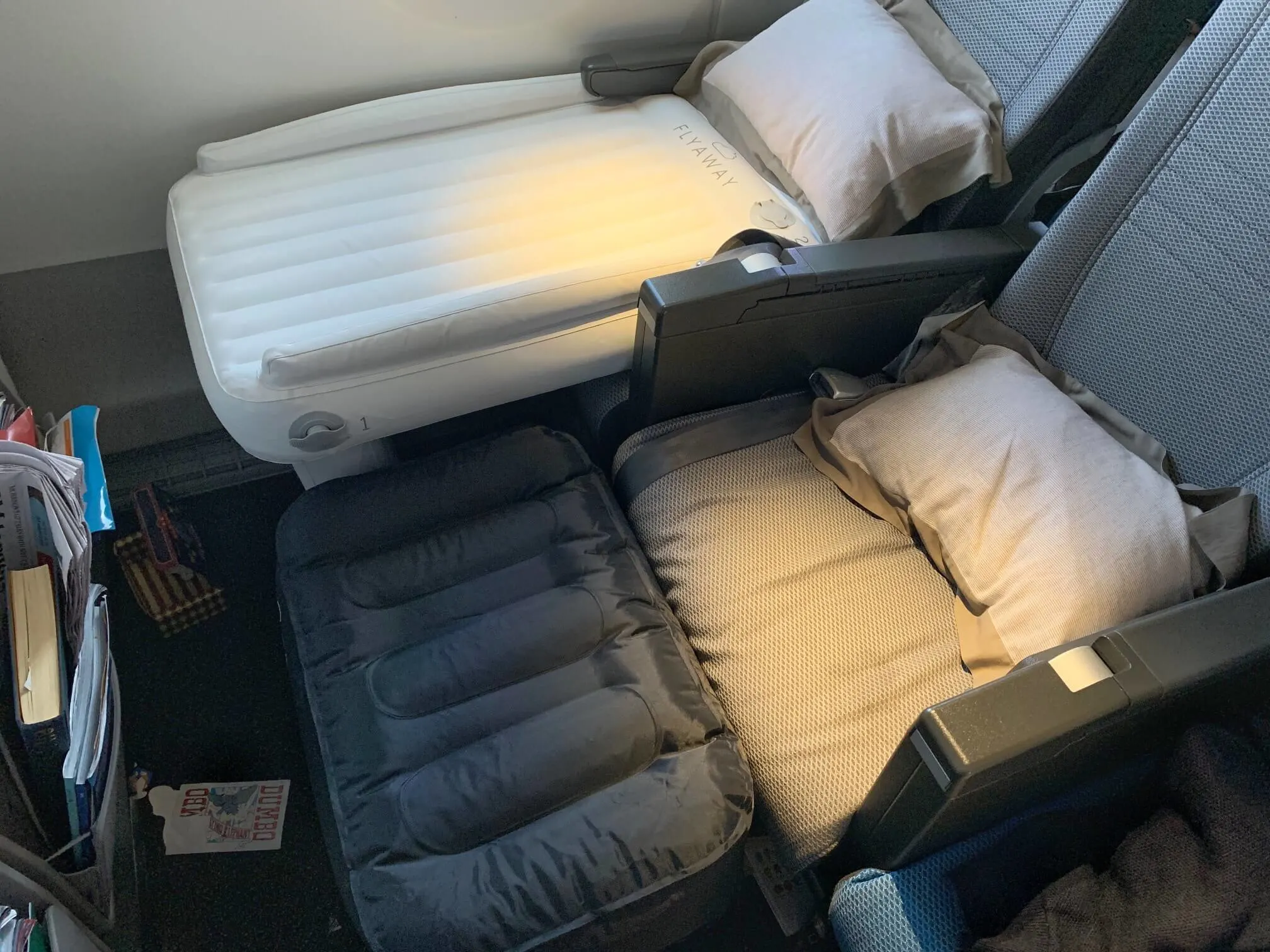Are you planning to travel with your toddler? Is a comfortable and safe sleeping experience the biggest concern?
Read this article to know the pros and cons of carrying a toddler bed while travelling by plane. You’ll have access to all the information required to make an informed decision.
Get ready for your journey and create the best experience for your little one!
As a parent, traveling with a toddler can be an unpredictable adventure. One area in which parents may consider making an investment is in a specialized toddler bed for airplane travel. While this type of bed can provide extra comfort and convenience for your youngster, it’s important to become familiar with the pros and cons before making your purchase decision. In this guide, we will discuss the main aspects of using a toddler bed for airplane travel so that you can determine whether or not it’s the right choice for your next family vacation.
We’ll start by exploring the different types of toddler beds that are available and then look at the advantages and disadvantages of each one. We will then move on to consider features to evaluate when selecting a suitable bed and some tips to make sure that it fits into airline regulations as well as detailing what options are available if you decide not to invest in such a bed. Lastly, we will provide some helpful recommendations about how to make sure that your little one has the best possible experience when traveling on an airplane.
Explanation of a toddler bed for airplane travel
A toddler bed for airplane travel is designed for toddlers who are between 18 months and four years of age and are ready to face the challenge of airplane travel. The toddler bed allows children to sleep in an upright position, while providing extra support and comfort during long flights. This special bed is specifically made to fit an airline’s standard seating dimensions, so there’s no need to worry about making sure your child’s seat fits properly.
These beds often come with safety features such as straps, pockets and a stabilizer bar which offers additional support while in the air. Also included is a fitted sheet that attaches securely to the passenger headrests, enhancing the feeling of comfort and security for your little one on board. Some models even have compartments for your toddler’s favorite toys or books!
In addition, these toddler beds travel easily since they typically only weigh between 5-8 pounds, depending on the model you select. Moreover, many brands offer convenient carrying bags for easy transport when traveling by plane or car ride.
Importance of toddler beds during long flights
When traveling by air, it’s important to consider the comfort and safety of your toddler. While airline seats may provide an adequate solution for short flights, long-distance travel will likely require more space and amenities for a successful journey. This is where having a special toddler bed can be helpful. With a comfortable and safe sleeper, children are able to sit up and move around freely during the flight and have sufficient room to stretch or nap without having to be constantly monitored or restrained by their parents.
Having a toddler bed while traveling by plane can provide several benefits and advantages over simply bringing along an airline seat or other forms of child seating options:
- Increased Comfort – Children tend to feel much more secure in their own beds as opposed to being confined in a cramped airplane seat. With a portable toddler bed, your child can relax comfortably with extra space around them instead of feeling confined. This can even help reduce travel anxiety for toddlers!
- Safety – Portable toddler beds provide additional protection from turbulence, side-to-side rocking, sudden pressure changes, and other hazards that could come from sitting in an airplane seat. They also provide additional cushioning should there be any bumps during the ride.
- Reduced Expenses – Buying multiple airline seats is expensive not just on traditional airlines but also with budget carriers who now charge based on baggage weight–not seat position–costing up to $35 per person per trip each way! Additionally many discount airlines won’t let you book more than four seats so you may have to leave one family member behind if your children all need seats but don’t qualify for freebies anymore; this is eradicated with a toddler bed that acts as its own “seat”.
Pros of using a toddler bed during airplane travel
Using a toddler bed on an airplane can be a great convenience for parents who are traveling with a young child. Here are some of the key pros of using a toddler bed on an airplane journey:
- Traveling with a toddler bed eliminates the need to carry and schlep cumbersome items such as an inflatable mattress or cot during plane rides. Toddler beds will come in all shapes and sizes, so it is easy to find one that fits within size limits for bringing onto the plane, such as those imposed by TSA guidelines.
- The use of a toddler bed eliminates any need to ask friends or family members for assistance with carrying large items through airport security checkpoints or to bother other seating occupants for help setting it up during the flight.
- It is quite comfortable for small children, who will get their own special place on the plane (and often makes them much calmer). The padding helps make sure they do not feel every lump and bump incurred while flying in turbulence, while also providing privacy and safety since larger passengers cannot inadvertently bump into them or impede seatbelt access easily.
- Many toddlers feel more secure in their own beds when sleeping away from home, especially if they have grown accustomed to sleeping in the same position night after night back at home. A familiar bed makes the idea of traveling less jarring and may even help them sleep better than having to adjust to new environments each time they travel by airplane.
Comfort and safety
Airplanes can sometimes be bumpy and unpredictable, making it difficult for parents to provide a comfortable and safe sleep environment for their toddler on a plane. When in-flight comfort is essential, investing in a toddler bed for airplane travel can be the ideal solution. While many parents consider using a car seat or carrying their child on their lap during flights, these options pose safety concerns and lack of sleep support for the child. Instead, more parents are now opting to buy a miniature child’s bed specifically designed for airplane travel.
What are the advantages of using this kind of bed? Comfort and safety are the two most important features that come with this unique item. The security measures ensure that your little one remains within arms reach while sleeping or playing in flight. You don’t have to worry as much about someone bumping into them while they try to rest or they accidentally falling off your lap during turbulence because they’ll be securely nestled inside their own comfortable space with soft edges and structure specifically designed with them in mind. Additionally, the materials used often include foam padding which enables the mattress to conform around your toddler’s body providing extra support throughout any bumps encountered during air travel.
Convenience and ease of use
Whenever you plan a family vacation, one of your first concerns is with travel – particularly for toddlers. Travelling abroad with children can be an arduous experience, and even air travel can be challenging when it comes to transportation. The introduction of toddler airplane beds has provided some relief for parents who want to make the process easier and more comfortable for their kids. However, there are both pros and cons to consider before making an informed purchasing decision.
- Convenience and ease of use
Toddler airplane beds are relatively easy to assemble, store and transport; they often come with sturdy travel bags – which also double as a great storage option at home – making them incredibly convenient while travelling. Additionally, they often fold up quickly when needed, so that safety and security checks can take place without incident. Plus, many designs provide comfortable seating or sleeping options for young children during the flight itself – again providing a much-needed element of comfort and convenience during longer trips.
Protection against germs and bacteria
Though the risk of contracting any illnesses from airborne germs is relatively low, a toddler bed for airplane travel provides additional protection against bacteria that can be found on airplane seats and tray tables.
Since the beds have a washable cover, you can be sure your child is being protected from any contaminants that may be present during your flight. Additionally, if your toddler falls asleep in the bed, there is reduced contact with germs caused by placing their face directly on a seat or surface.
III. Factors to consider when choosing a toddler bed for airplane travel
When choosing a toddler bed for airplane travel, there are several factors to consider. Comfort is paramount, as it is critical for your child to be comfortable during the flight and get some quality rest. Safety and durability also need to be taken into account, since any issues with the bed may result in damage or injury. Size and weight is another important factor, as a heavier bed may be more difficult to carry on the plane and leave less room in the overhead compartments. Cost should also be taken into consideration, as more expensive models may have enhanced features such as adjustable legs or extra padding, but may not necessarily provide any additional benefits during a flight.
One final thing to note is if you plan on using a toddler bed for airplane travel on a regular basis or if it will only be needed occasionally – this can influence which type of model you choose and can affect the cost of purchasing an airline-specifc baby travel cot.
Age and weight of the child
A toddler bed for airplane travel may be a practical or even necessary solution for families with a child aged two and under. Children who have outgrown the infant car seat but who are too small for a traditional plane seat will likely require such an item. However, there are both advantages and disadvantages you should consider before flying with a toddler bed on board.
In terms of choosing the appropriate item when flying with toddlers, safety is always paramount. The Federal Aviation Administration (FAA) recommends that any plane seats used by children aged two or younger must be able to hold up to 20 pounds in weight, and the vertical height must not exceed 29 inches. Carefully pay attention to the dimensions of your chosen model prior to purchasing.
When traveling via air with a toddler bed on board, it is important to secure your items and secure your child in order to ensure maximum safety during takeoff and landing procedures. Furthermore, while opinions on this vary among parents, certain toddlers may find it more difficult than recommended to remain in their beds as they fall asleep due to motion sickness or cramped quarters in general. Additionally, bear in mind that seating selection can be limited when selecting a plane ticket if you plan on including a child’s bed or other associated items of bulky baby furniture.
Type of airplane and seat arrangements
When it comes to deciding which toddler bed for airplane travel best meets your needs, the type of airplane and seat arrangements must be taken into consideration. Most commercial airplanes can seat around 2-5 passengers in the same row depending on the size of the airplane. On larger planes like a Boeing 767 or Airbus A330, typically 3 rows of 2, 3 or 4 seats can be found in a row. When selecting seating options for your flight, it is important to note the type of plane you are flying on as it will affect if and how you are able to implement a toddler bed.
In many cases, travelers with toddlers may choose two adjacent rows so they can comfortably sit in one row while their little one sleeps safely and securely in their own seat next to them. This is an ideal seating arrangement for those with small children who may not yet comprehend that they have to stay on their own seat during flights. Additionally, having two rows will provide plenty of legroom for parents and easy access if needed during mid-flight restroom trips and entertainment changes.
Other travelers may prefer single aisle airplanes because they allow more room around their seats when trying to maneuver a toddler bed through tight spaces where fastening/unfastening seatbelts can sometimes by difficult due to lack of space. In these cases single aisle planes are often preferable as there is more room for large items in front or behind providing easier access than traditional window or middle sections within multiple-aisle aircrafts.
Durability and quality of the bed
When it comes to durability and quality, you need to determine a few details about the toddler bed. Be sure to check the material used, the weight limit and age restrictions. Make sure that your child fits within the weight limit for the bed. Some beds may have a weight limit as low as 25 pounds, so it’s best to find out before purchasing one for air travel.
Additionally, look for beds that are build from high-quality materials and designed to last. Test out the mattress by laying down on it yourself; is should be exceptionally comfortable if you want your child to get a good night’s sleep on an airplane.
You should also make sure all components are included at purchase – such as foam corner pads or detachable railings –and that they work properly without any loose parts or broken pieces.
Conclusion
In this complete guide, we have examined the pros and cons of bringing a toddler bed on an airplane. Ultimately it is up to the discretion of you and your little one as to whether or not a toddler bed is the safest, most comfortable and convenient choice for your next flight.
The benefits can be significant if you’re travelling with a heavy sleeper that needs extra rest, or if your child gets overwhelmed in new environments. However, there can also be many drawbacks to bringing along this equipment, such as having to lift a bed over your head multiple times in order to place it back into storage after use. Additionally, if you do decide to bring a portable bed on board, it’s important that you know how to safely secure it within the airplane and verify its approved status with the airlines ahead of time.
By weighing both sides of the argument carefully before making the decision, you can help ensure that your flight goes off without a hitch and that everyone gets what they need from their travels!
FAQ’S
How should a toddler sleep on a plane?
A toddler can sleep on a plane by using a neck pillow or a travel pillow, wearing comfortable clothing, and having a favorite blanket or stuffed animal.
Can I give my toddler something to sleep on plane?
It is best to consult with a pediatrician before giving a toddler any medication or sleep aid on a plane.
What is the safest way to fly with a toddler?
The safest way to fly with a toddler is to use a car seat on the plane, ensure they have their own seat, bring a well-stocked diaper bag, and have patience and flexibility.
What age can toddlers go in travel bed?
Toddlers can use a travel bed once they have transitioned out of a crib and are comfortable sleeping in a bed, usually around 2-3 years old.
How can I make my toddler comfortable on a long flight?
To make a toddler comfortable on a long flight, bring plenty of snacks, drinks, toys, and activities, dress them in comfortable clothes, and keep a consistent routine.
What does a 2 year old sleep in when Travelling?
A 2 year old can sleep in a travel crib, pack n’ play, or a portable bed.
What is the best way for baby to sleep on plane?
The best way for a baby to sleep on a plane is in a bassinet, held by a caregiver, or in a car seat.
What to do if baby cries in flight?
If a baby cries on a flight, try to soothe them with a pacifier, bottle, or by walking them up and down the aisle. It’s also helpful to bring noise-cancelling headphones and earplugs for other passengers.
What can I give my child to sleep on a plane?
It is best to consult with a pediatrician before giving a child any medication or sleep aid on a plane.
What is the hardest age to fly with a child?
The hardest age to fly with a child varies, but it is often said to be between 1-2 years old due to their mobility, short attention span, and potential for separation anxiety.
See Also-
- Best bunk bed for toddler
- Best car bed for toddler
- Best crib to toddler bed
- Best full size bed for toddler
- Best ikea toddler bed

